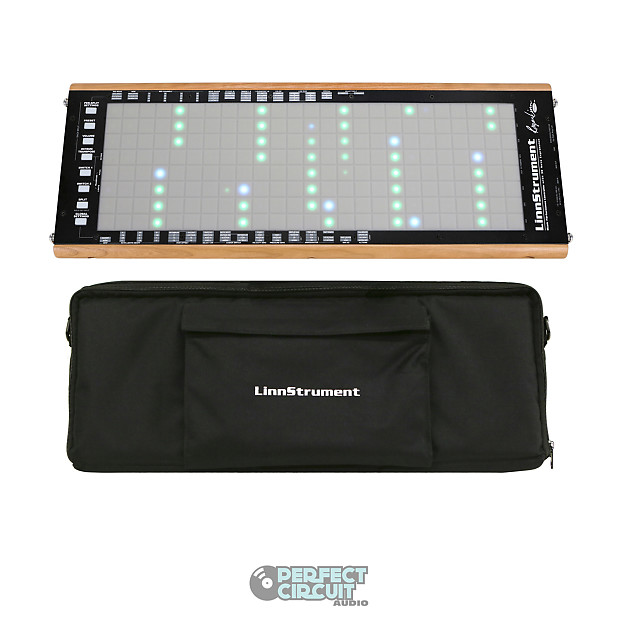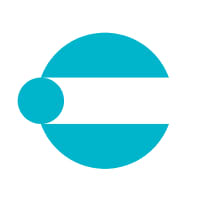
Roger Linn Design LinnStrument MIDI Controller
Price$1,499
Free Shipping
Free Shipping
from Burbank, CA
Listed:over a month ago
Views:3888
Watchers:53

Burbank, CA, United States
30-Day Return Policy
Enjoy peace of mind with your new gear

Meet LinnStrument, an expressive MIDI controller for musical performance. Unlike the simple on/off switches of a standard MIDI keyboard, LinnStrument's 200 RGB-backlit note pads sense each finger's subtle movements in three dimensions, enabling musical performance expression rivaling that of fine acoustic instruments.
Electronically-generated sound is typically performed on a MIDI piano keyboard, which is little more than an array of on/off switches. By comparison, LinnStrument captures your subtle finger movements in 3 dimensions:
1) Pressure & Velocity (Z axis): In additional to velocity, LinnStrument senses continuous pressure from the lightest to heaviest touch, permitting fine control over each note's loudness, just like in wind or bowed-string instruments. This is different from a MIDI keyboard's Aftertouch, which starts to send pressure data only after the key is fully depressed and the note is already sounding.
2) Left/right (X axis): These movements are normally used to control pitch. There's no need for bend or mod wheels. To bend pitch, simply slide your finger from one note to another, then wiggle it for vibrato. Smart pitch correction keeps you in tune without limiting your vibratos or pitch slides.
3) Forward/backward (Y axis): This is normally used to provide variation in timbre, for example to vary the waveform of an oscillator, the bow position of a violin or the embouchure of a wind instrument. But it can be assigned to control any MIDI parameter.These three dimensions are sensed independently for all simultaneous touches. This adds up to an electronic instrument with expressive control approaching that of fine acoustic instruments.
LinnStrument's notes are arranged not as on a piano but rather like a stringed instrument, with eight rows (like strings), each consisting of two octaves of consecutive semitones. Like strings, the rows can be tuned as a guitar or violin or however you like, but most LinnStrumentalists use the default fourths tuning, as on a bass guitar or the lower four strings of a guitar. A good way to think of this note layout is like an 8-string bass.To make it easy to find the right notes, the naturals (C, D, E, F, G, A and B) are lit, with all the C notes lit in a different color. Alternatively, you can light any scale and in any of six colors.Why not a piano note arrangement? Because a piano keyboard's non-uniform pitch spacing and rear position of the black keys make it awkward to perform note-to-note pitch slides, an important expressive musical gesture of guitar, violin, sax and most other acoustic instruments. By comparison, the notes on LinnStrument's stringed-instrument layout are evenly spaced and positioned and therefore don't have this problem.
LinnStrument sends standard MIDI messages over its USB or MIDI output jacks, and is configured by default to work out-of-the-box with every MIDI sound generator in existence, polyphonically and with the advantages over a MIDI keyboard of performed vibrato and note-to-note pitch slides.
For fully polyphonic 3D control, you'll need a synth that is compatible with MPE (Multidimensional Polyphonic Expression), a new MIDI standard for connecting expressive controllers and synths over standard MIDI. It's already supported in quite a few major software instruments. We even include a free sounds file for Apple's MainStage and Logic, plus a free license for Bitwig 8-Track, all of which are MPE compatible.
LinnStrument's 200 note pads are spaced 19 mm apart--just like the average spacing of fingers--with a shallow trough between the pads so you can feel where the notes are, but easily slide across them for pitch bends. The surface is soft but not so soft as to feel squishy when playing fast rhythmic parts. It senses very light touches, similar to the minimum force required to play a MIDI keyboard. And you can play it on a flat surface, but at only 22.5 inches long, 1 inch thick and 5 pounds, you can use the included guitar strap pins to play standing up.
3D Swing Arpeggiator - LinnStrument's built-in Arpeggiator responds to all 3 dimensions of movement for entirely new ways of beat-synced play, always in sync to your DAW. The Replay All mode creates chordal rhythms merely by varying chord pressure, like the Roll feature of drum machines, and also works great for creating beats, as shown in the above video.
Split Keyboard / Strum mode - You can split the keyboard to play two different sounds, and adjust the split point as you like. You can even use one split as eight strings to strum notes fingered on the other split, just like a guitar, as demonstrated in the video above.
CC Faders mode - Using the Split Keyboard, you can use either split as eight horizontal Control Change faders. Control eight sound parameters in real time as you play.
Low Row - The lowest row of pads can be reassigned to a variety of live performance control modes, conveniently placed for thumb control while fingering notes on the other seven rows. Use it as a Sustain Pedal, a Modulation or Bend strip, to momentarily enable the Arpeggiator (sliding your thumb to vary its rate), to restrike a fingered chord, or even as a 3D control strip, modulating three parameters at once.
Features
| Condition | |
| Brand | |
| Model |
|
| Categories | |
| MIDI I/O |
|
| Number of Pads |
|